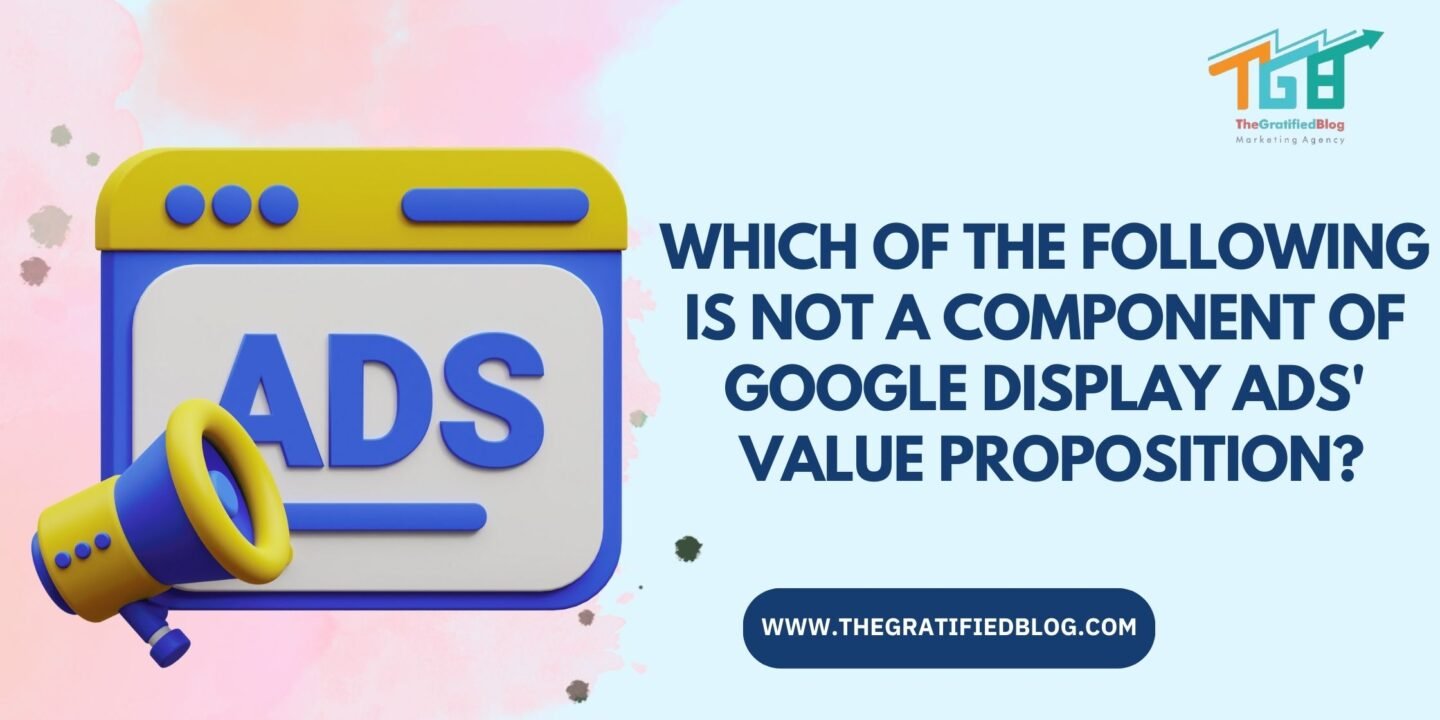
“Which of the following is not a component of Google Display Ads’ value proposition?” is a crucial question for advertisers aiming to unlock the full potential of this powerful tool. Google Display Ads have become a cornerstone of online advertising, providing numerous advantages for businesses seeking to promote their products and services. Understanding the key elements of Google Display Ads’ value proposition is vital. In this blog post, we’ll explore these components and why they are integral for advertisers.
Which Of The Following Is Not A Component Of Google Display Ads’ Value Proposition?
The options are:
- Intent
- Machine learning
- Performance
- Search ✅
The Google Display Ads Value Proposition
Google Display Ads’ value proposition is built on several key components, each contributing to its success:
- Intent: Google Display Ads leverage user intent to reach potential customers. They use advanced targeting techniques to display ads to users who may not be actively searching for a specific product or service but have shown an interest in related content. By interpreting user intent, display ads help advertisers capture potential customers even before they initiate a search.
- Machine Learning: Machine Learning lies at the core of Google Display Ads. Google’s algorithms use machine learning to analyze user behavior and data, enabling them to make real-time decisions about which ads to display to specific users. This dynamic optimization process ensures that suitable ads are presented to the right audience at the right time.
- Performance: The performance of Google Display Ads is crucial to its value proposition. These ads are designed to offer measurable and trackable results. Advertisers can monitor critical performance metrics like click-through rates (CTR), conversion rates, and return on investment (ROI) to assess the effectiveness of their campaigns.
- Search (not a component): While Google’s advertising ecosystem includes Google Search Ads, these are distinct from Google Display Ads. The core function of Google Search Ads is to appear at the top of appearing on search engine results pages (SERPs) when specific search queries are made. On the other hand, Google Display Ads focus on showcasing ads on various websites, apps, and platforms within the Google Display Network (GDN), reaching categorized users according to their browsing behavior, interests, and demographics rather than their search queries.
What Is The Value Proposition of Google Ads?
The value proposition of Google Ads includes targeted advertising, a pay-per-click model, measurable results, flexibility, various ad formats, placement options, mobile optimization, remarketing, ad scheduling, and competitive insights. It offers highly effective, customizable, measurable advertising solutions to reach a specific audience, drive traffic, and achieve marketing goals.
Why Is Search Not Part of Google Display Ads’ Value Proposition?
It’s crucial to understand that search and display advertising serve different purposes and have distinct value propositions.
- Search Ads are Query-Based: Search Ads respond to user-initiated queries in search engines, appearing when users actively search for specific keywords or phrases. In contrast, Google display ads are not triggered by search queries. They appear on websites or apps within the GDN based on user behavior and interests.
- Audience vs. Intent: Google Display Ads primarily target specific audiences by analyzing user behavior, demographics, and interests. This allows advertisers to reach users who may not be actively searching but are likely interested in their products or services. Search ads, in contrast, focus on user intent, capturing those actively seeking information or solutions.
- Different Ad Formats: Search and display ads also employ other formats. Search ads typically include text ads at the top of search results, while display ads offer a broader range of formats, including image, video, and responsive ads.
Conclusion
We’ve demystified the core components of Google Display Ads’ value proposition, highlighting the role of “search” as not part of this advertising medium’s essential elements. Understanding these distinctions is vital for advertisers to make informed decisions and harness the potential of Google Display Ads. We hope you found the answer to the question, “Which of the following is not a component of Google Display Ads’ value proposition?” illuminating and informative. Your thoughts and questions on this topic are highly encouraged. Feel free to leave your comments on our blog and share your thoughts—insights, and queries to continue the discussion. Your input is valuable to us!








No Comments